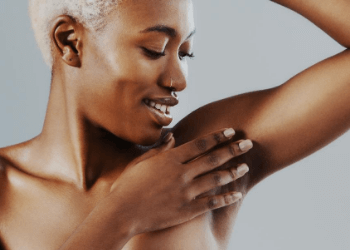Botox: it’s not just a pretty face. This face-freezing injectable is most commonly thought of as an anti-wrinkle treatment, helping ‘block’ the signals between the nerves and muscles and so making wrinkles appear less visible. But it has lots of other surprising uses too, which make it possible to treat various medical conditions.
In this post we will talk you through some of the fantastic ways Botox can be used in a medical capacity. Read on to find out just how versatile this simple treatment can be.
-
Hyperhidrosis
Hyperhidrosis is the medical term for excessive sweating. It’s estimated that around 678,000 people have the condition here in the UK, Here are some fast facts about it:
– It can develop even in early childhood, and can be genetic or caused by certain illnesses.
– It affects areas of the body as varied as the hands and feet, the armpits and groin, the face, and the back.
– While it can improve with age, some people suffer from the condition throughout the course of their life – and while hyperhidrosis doesn’t hurt, it’s often uncomfortable and embarrassing.
– It can also be managed, to some extent, through diet, clothing choices and bodycare products (such as antiperspirant and emollient products).
One of the most successful ways of treating excessive sweating is through Botox injections. These help ‘block’ the sweat glands, preventing them from producing too much sweat. Botox is a prescription-based product, so we would always invite you to a consultation before treatment, to ensure it’s right for you and your skin needs.
-
Bruxism
This is the medical name for grinding of the teeth or clenching of the jaw. In the UK, up to 10% of the population are thought to have the condition, including children. Here are some quick facts about it:
– It can occur during sleep or wakefulness, and there are thought to be different causes for each. Awake bruxism is more common in women, but sleep bruxism affects men and women equally.
– Some people may not have any symptoms, however excessive bruxism can lead to tooth wear and sensitivity, aches and pains in the jaw, and even headaches.
– Bruxism can be both a conscious habit and entirely involuntary.
– Stress and depression have been linked to the condition.
Botox injections can be used to temporarily prevent involuntary grinding and clenching through relaxing the muscle. This can prevent wear and tear on the teeth, too.
-
Other conditions
There are many other medical uses for Botox, from treating a lazy eye to an overactive bladder. It’s also been used to successfully treat migraines, as well as some neurological concerns.
Here at Emma J Aesthetics, your skin clinic in Inverness, we focus on treatment for hyperhidrosis, which is one of the most common medical reasons to book in for Botox injections.
Contact us today
We think everyone should live life to the fullest, and not let a thing like confidence get in the way. That’s why we trust in our transformative medical and aesthetic treatments. To enquire about hyperhidrosis (excessive sweating) treatment, get in touch with our friendly team today.


